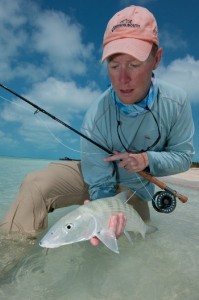OK, a couple weeks back I posted about bonefish traveling far and wide as tagged fish have shown up sometimes hundreds of miles from where they were tagged.
An alert (and knowledgeable) reader pointed out that while some fish do move, most of the fish tagged in that study (and in others) don’t. They stay right there.
In one study I found, two of the tagged fish returned to the same flat repeatedly (over a span of 40 and 61 days). The fish were locals. All the shrimp knew their names. They were homebodies, not the island-hopping world travelers that grabbed the headlines.
Of 11 tagged fish, 7 (64%) were detected repeatedly over time-scales ranging from days to months; 2 remained in the study area over the life span of their acoustic transmitters (40 and 61 d), revealing a very high degree of site fidelity.
This has some conservation significance as well, I’m sure. I’m just guessing here, but if bonefish display “site fidelity” and you destroy that site and degrade it to the point where it can’t support the prey that live there, well, you probably destroy the bonefish who call that particular bit of habitat home. If, on the other hand, you preserve that flat, you likely preserve those bonefish and that population. That’s just me guessing, but it sounds like a good guess, doesn’t it?

Nice bone, tagged and ready to go. Photo by Cameron Miller.


Thats a no brainer !!!!!!!!!!!!